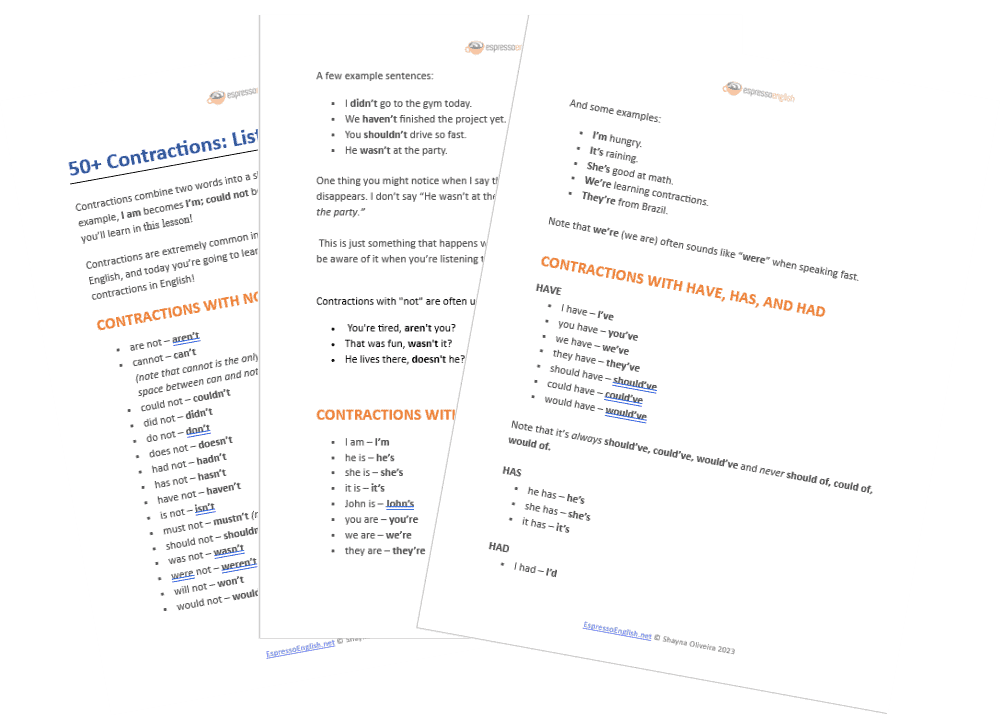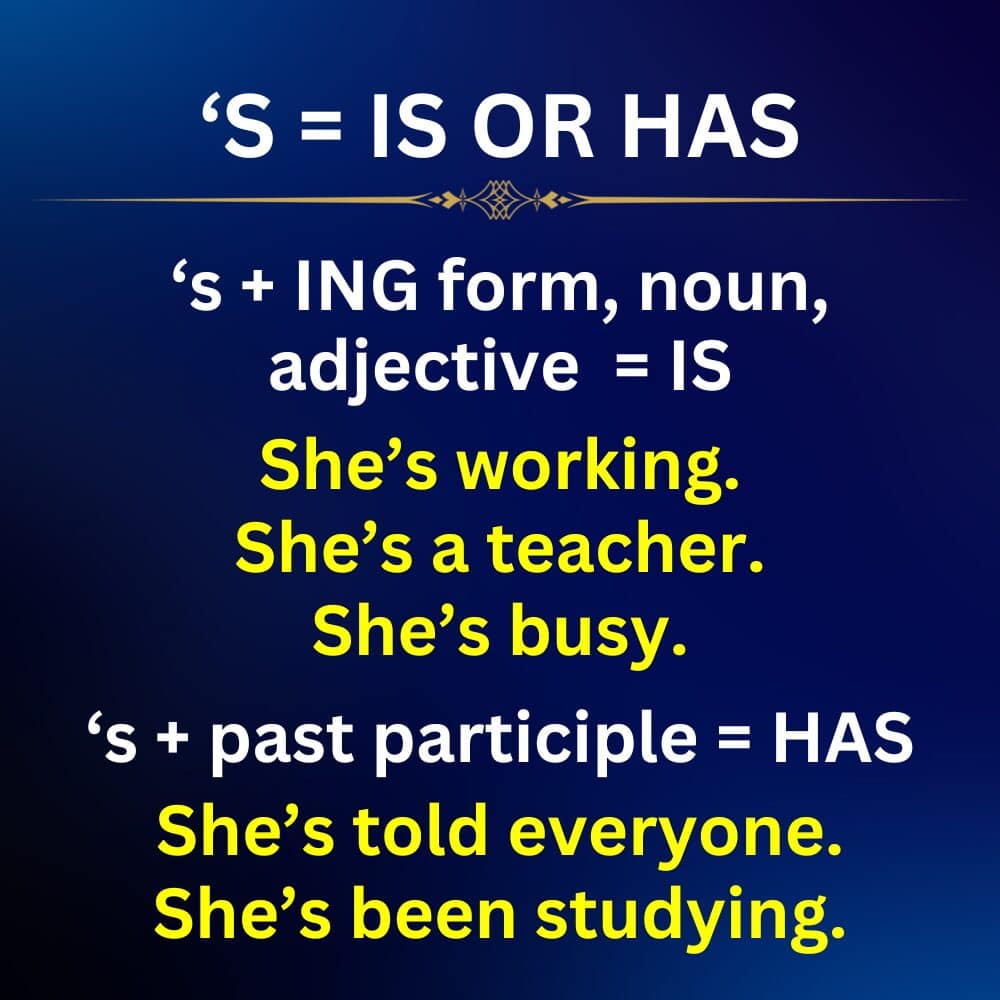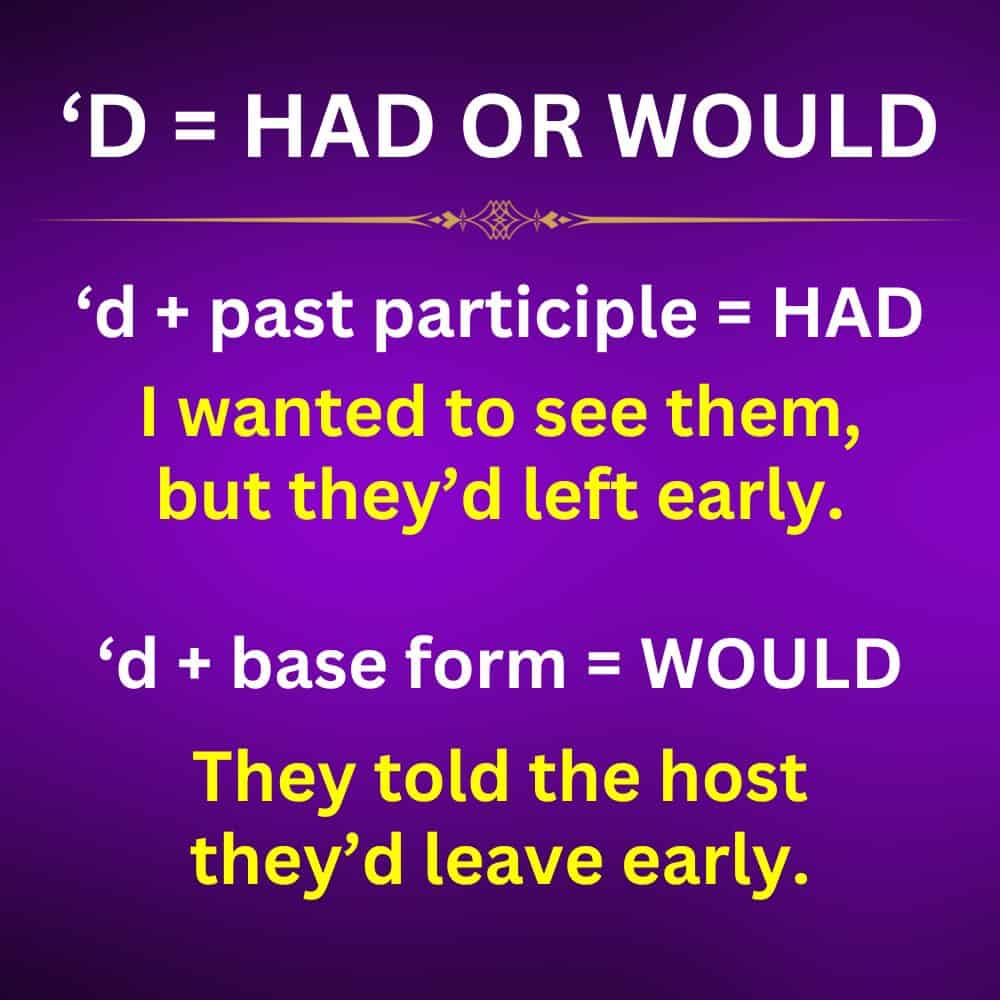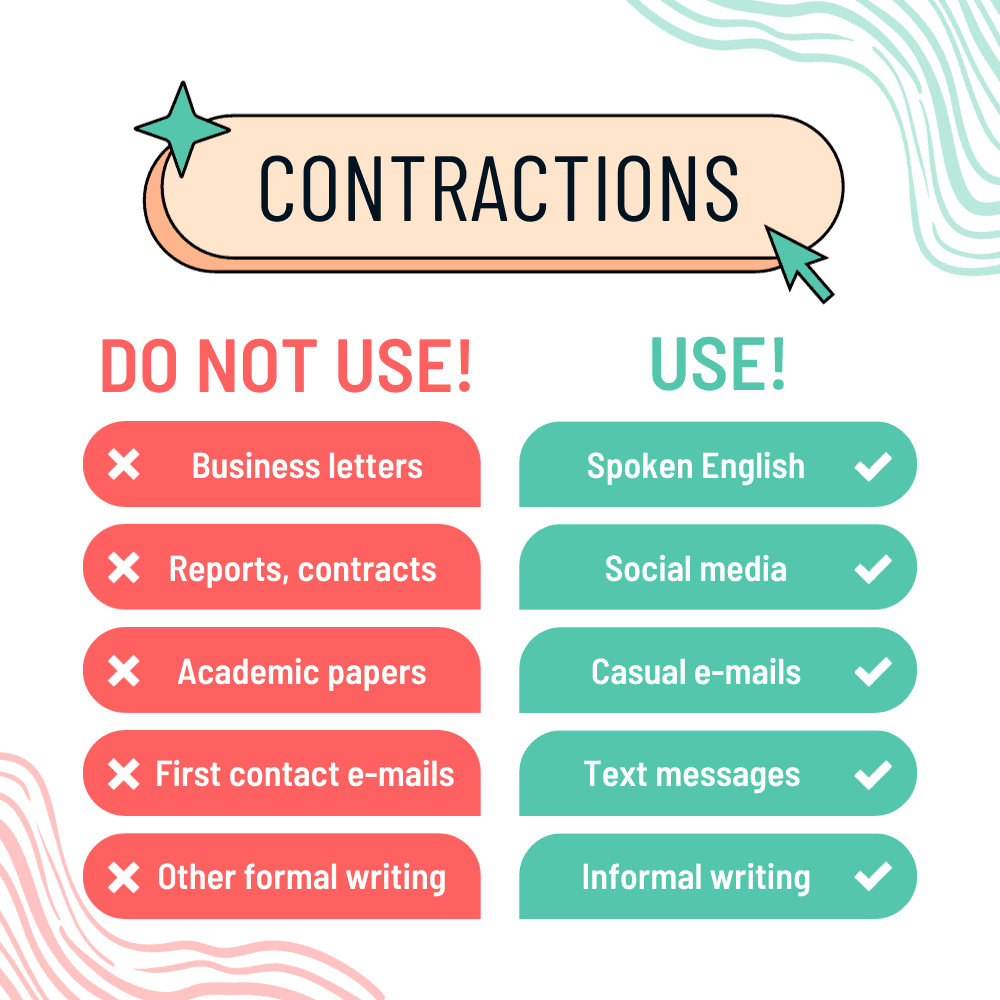

Contractions are extremely common in spoken English and informal written English, and today you’re going to learn 50 of them – yes, we do have that many contractions in the English language!
Make sure to download the free PDF guide to this lesson so you can save the full contractions list and all the example sentences.
A few example sentences:
One thing you might notice when I say these sentences is that the final “t” almost disappears. I don’t say “He wasn’t at the party,” it sounds more like “He wasn’at the party.” This is just something that happens when speaking naturally, and I want you to be aware of it when you’re listening to native English speakers talking fast.
Contractions with “not” are often used in tag questions:
Remember: its without an apostrophe is a possessive pronoun, ex. The car crashed because its brakes failed. It’s with an apostrophe is the short form of “it is” or “it has” (which you’ll see in the next section).
And some examples:
One thing to be aware of is that we’re (we are) often sounds like “were” when speaking fast.

HAVE
Note that the short forms of these modal verbs are always should’ve, could’ve, would’ve and never should of, could of, would of.
HAS
HAD
We use have/has in the present perfect tense, as in these examples:
We do NOT use the contracted form if “have/has/had” is the MAIN VERB of the sentence, meaning possession. We only use the contraction when have/has/had is acting as a helping verb.
Also, you might notice that she’s could be “she is” or “she has” – how can you know which one?
Look at the whole sentence.
If it’s followed by an -ING verb or by an adjective or noun, that means “she is”:
If it’s followed by a past participle, that means “she has”:
Note: ‘s can also be used in possessive nouns (John’s kids, Mary’s car).
We use contractions with had in the past perfect tense, as in these examples:

A lot of these sound a bit different when spoken fast, as you’ll see in the example sentences)
Let’s look at and listen to the examples:
Again, we have a problem – they’d can mean they had or they would – how can you know which one? By looking at what comes after it.
They’d + past participle means “they had,” and they’d + base form means “they would”:

We’ve been focusing on contractions with subjects that are people – I, you, he, she, etc. but we also have some common contractions with other words – so let’s finish this lesson by looking at some of those.
Here is and there is become here’s and there’s. For example:
We do not make contractions in writing with here are and there are, even though they might sound shorter when speaking. But in writing, they are always two words:
That is becomes that’s, and that would becomes that’d:
This will and that will become this’ll and that’ll:
We also see a lot of contractions with question words:

When we’re speaking English, we use contractions very often – pretty much anytime there’s an opportunity to use one, we use it in everyday speech. Otherwise, your speaking would sound kind of strange and robotic – plus it takes longer. Compare these:
We avoid contractions in formal writing – so that would be business letters and reports, contracts, academic essays and research papers. Check out this lesson about transforming more casual phrases into more formal phrases for business English.
We can use contractions in informal writing – casual emails, blog posts, social media posts/comments, text messages, etc.
What about e-mails at work – are those considered formal or informal?
It depends – contractions are fine in e-mails to people who you regularly communicate with, like your co-workers, supervisors or employees, clients with whom you already have a relationship, etc.
But you should avoid contractions if it’s the very first time you’re contacting someone, such as in an e-mailed cover letter inquiring about a job you want, or when you’re reaching out to a brand new client or someone at another company when you’re beginning a business relationship with them. In those situations we tend to write a little more formally, and then the communication style becomes more casual over time as more messages get exchanged.

Now you know all about contractions in the English language, and you’ve seen lots of examples!